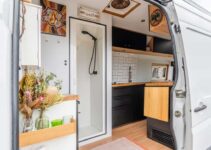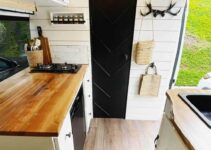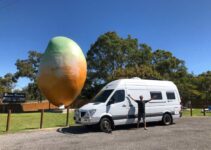Having travelled all around the country seeking out the best free camping in Australia, I’m pleased to bring you this expert guide on how you can save your costs when doing van life in Oz and make the most of freedom camping!
Australia’s remote and wild outback offers an array of benefits to its travellers. Van life in Australia is just what you’d expect – peaceful and often filled with free camping opportunities.
Having such a big landmass compared to its small population, Australia is filled with captivating nature, picturesque landscapes, quiet and pristine beaches and stretches of land without ever seeing another person.
If you are about to embark on an adventure of a lifetime around one of the most beautiful countries in the world, this comprehensive guide to free camping in Australia is just what you need.
What Exactly are FREE Campgrounds in Australia?
Firstly, let’s talk about what camping looks like in Australia. As you’re probably aware, Australia is filled with a whole lotta empty land. And while it may seem like you can plot yourself down anywhere you like given the vastness of the country, unfortunately, it’s not the case.
Free campgrounds in Australia vary from rest stops with very basic facilities to empty land patches in the outback to your own personal camping cove found along the beach. And of course, they come sans price tag.
Free camping in Australia means you need to be self-sufficient and prepared to live off the grid. Nature may be your toilet. The ocean may be your bath. What more could you need?
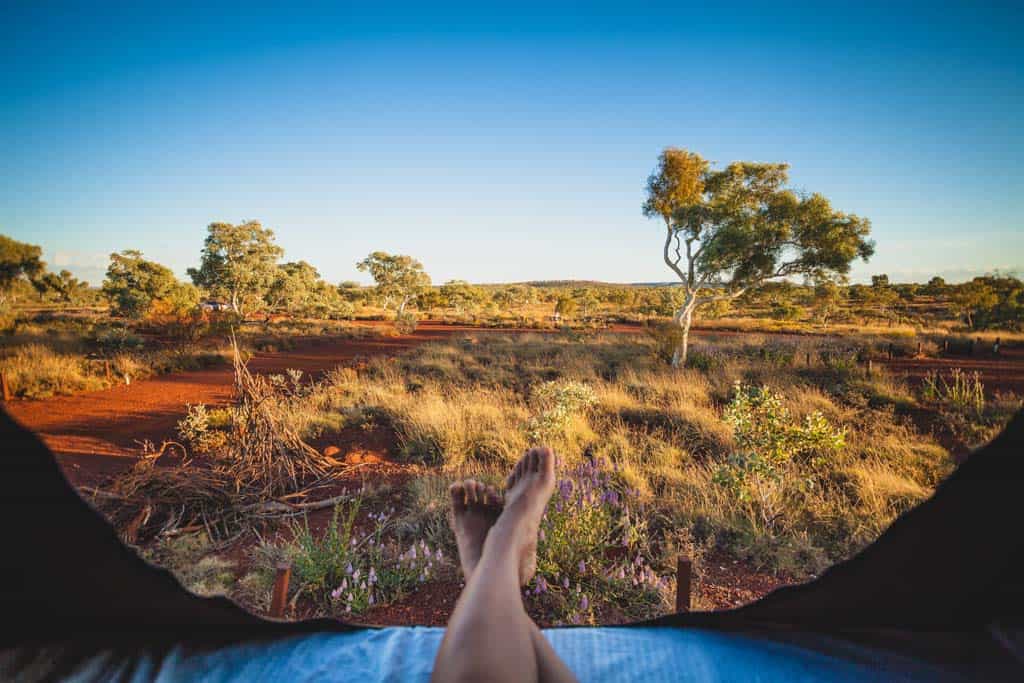
Free Campsites, Rest Areas & Wild Camping
Although we’re throwing everything under “free camping in Australia” umbrella, there are different types of sites and areas available and the legalities of each vary.
Free campsites are designated and marked (usually with no facilities) that allow visitors to stay for free. There may or may not be a limit on how many days you can stay.
You’ll find camps scattered all around the country and in some national parks in New South Wales and Victoria (other states usually charge a small fee for camping).
READ MORE: Check out our brand new guide to the best free camping in Tasmania!
This should be what you are on the lookout for most because they are both legal, free and usually easy to find because they are known by travellers.
The only downside to the designated free campsites is that if you’re travelling during the weak season, they are likely to fill up quickly. If you’re going to a particularly popular campsite, it’s best to get there as early as possible to time coming in as people are leaving.
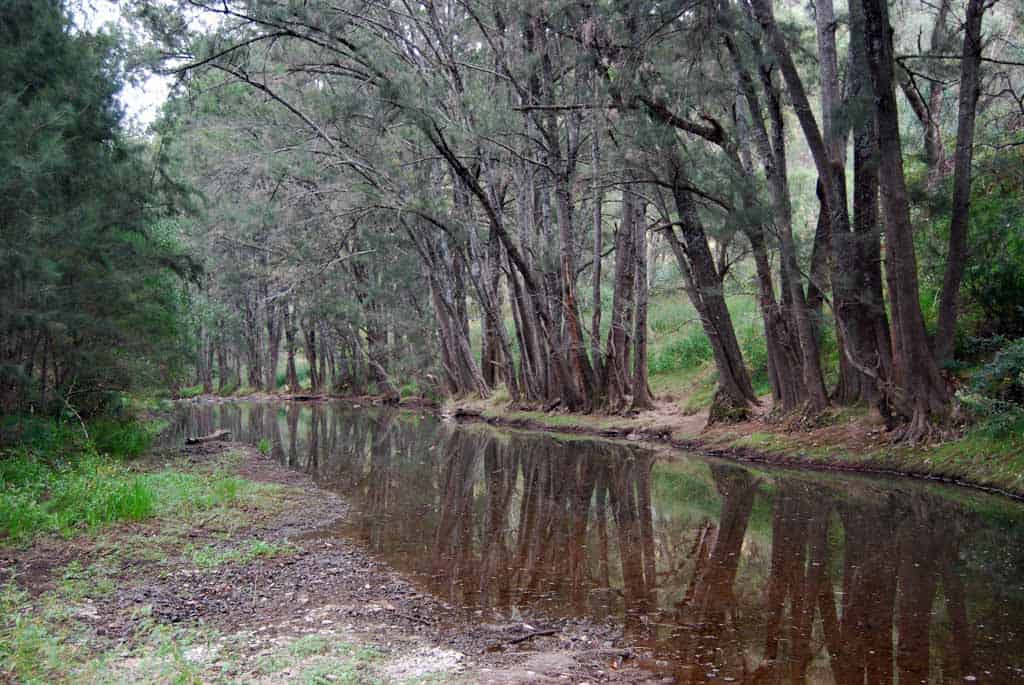
Rest areas are typically along the main highways in Australia and designed for drivers to stop, stretch their legs and have a break to avoid fatigue. They are, of course, free to use and drivers are particularly encouraged to use them.
You’ll often see large trucks pulled over in a rest area for a quick snooze during their long multi-day trips.
There are also a few rest areas where drivers can pick up free coffee for the long drive!
Rest areas vary in size though the larger ones usually have signs allowing you to stay overnight only. You’ll also find some rest areas with basic facilities like picnic benches and drop toilets.
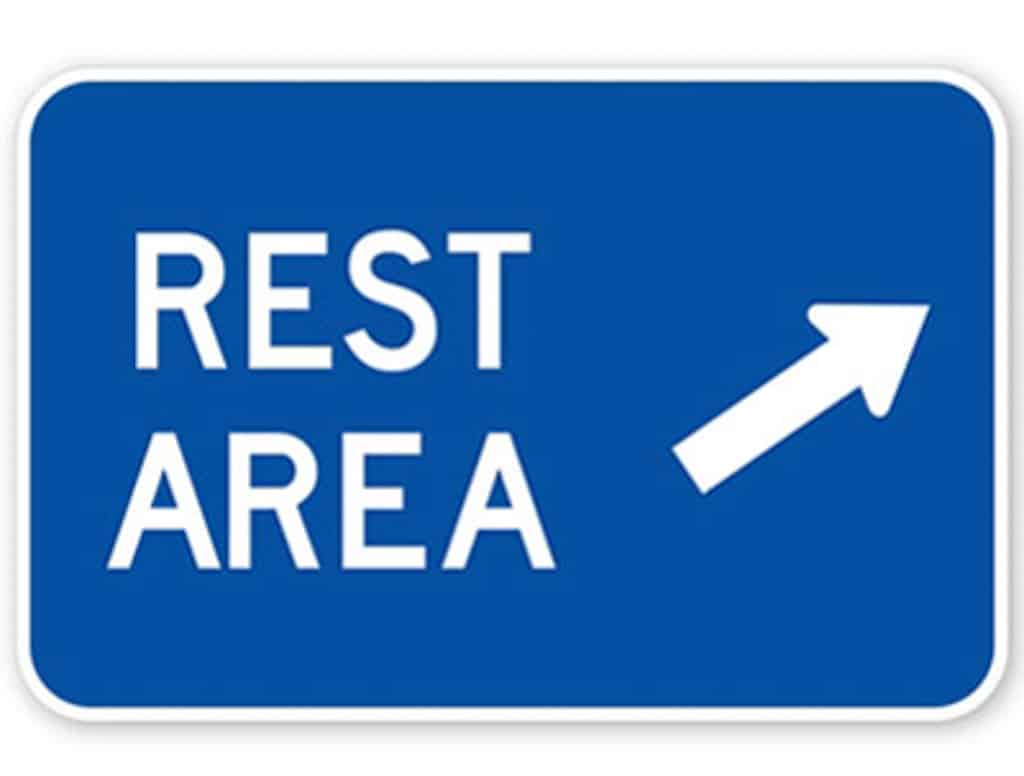
Wild camping or stealth camping is camping in non-designated areas, is illegal in Australia and you can get fined for it. However, in many areas, wild camping is tolerated and you usually won’t get into trouble.
While we aren’t suggesting by any means that you break the law, you can generally get away with a little free wild camping. If you are in a remote location, are respectful to the community and environment around you and get moving fairly early in the morning.
Avoid wild camping within towns and cities, on the roadside, on private land without the permission of the owner and places with clear signage prohibiting you from camping (such as beaches in residential areas).
Beach carparks are a big no-no and you are very likely to get caught unless it’s a remote beach far away from any town. These areas are often patrolled and you are very unlikely to get away with it.
When wild camping, keep noise to a minimum (don’t attract attention), keep your area clean and tidy and leave no trace.
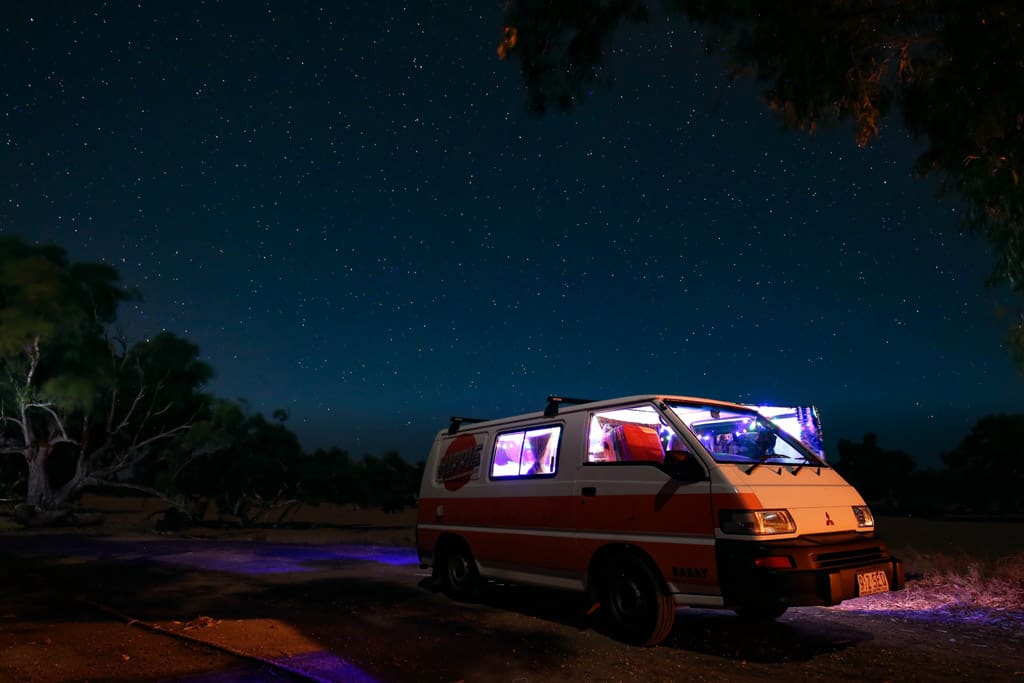
Benefits of Free Camping Australia
You mean besides the fact that it’s free? Travelling around Australia can be a costly feat and the three biggest expenses are fuel, campsite fees and food.
The average cost of a campsite in campgrounds in Australia is around $20-$30 AUD a night. Multiply that out to a yearlong trip and it’s the cost of a van! Cutting down on camping spot fees means you free up your funds for some epic adventures or to possibly spend an additional few months on the road!
Finding free camping spots also adds to the entire bush, outback and remote experience. These camping spots allow you to reconnect with nature and feel completely isolated from the rest of the world. Some of the most epic nights free camping was sitting around a (permitted) campfire and looking up the Milkyway and watching shooting stars.
On top of that, many travellers also make the most of free campgrounds so you’re likely to make some travel buddies travelling on a similar route to yourself. This is the best way to get tips on upcoming places to camp.
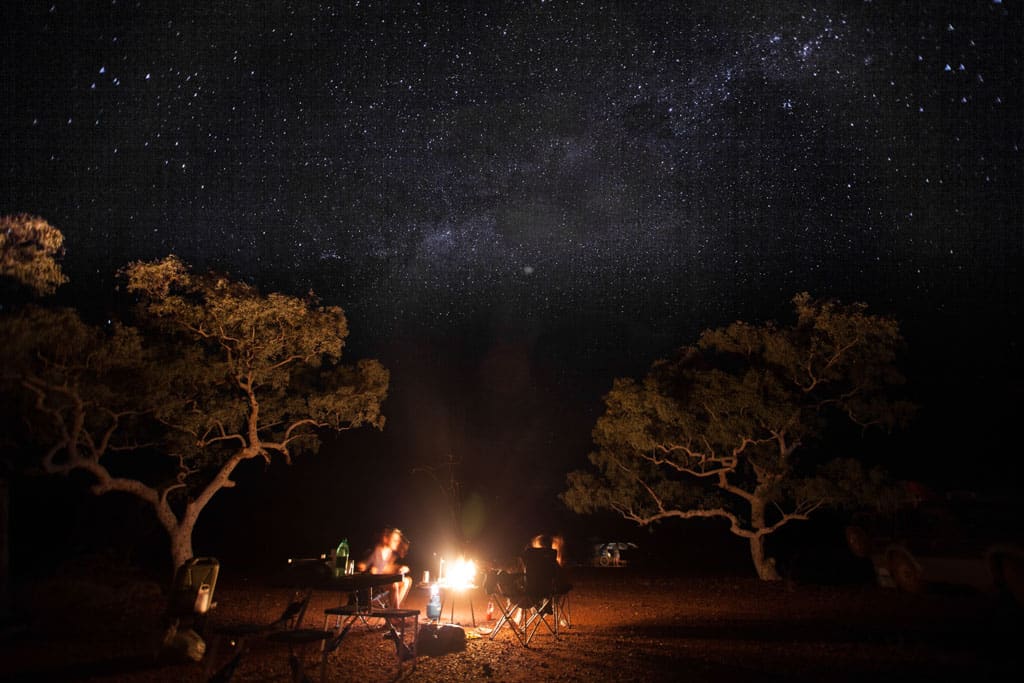
What Facilities Can I Expect from Free Camping in Australia?
To be put simply, none. Most of the time anyway. It shouldn’t come as a surprise that you might be without a hot shower or flushing toilet for a while. As I said, embrace the wild life of free camping!
A rest area typically won’t have any facilities though some of the larger areas and particularly those allowing for overnight stays may have drop toilets and picnic benches.
Other designated free campsites may have toilets and some even have showers – though you should never rely on or depend on any site having these.
If you have a second battery for your campervan, the best thing to do is wire it up so that it charges while you drive. If you don’t have this setup though, you may need to pay for a powered site or go into a caravan park from time to time. Alternatively, you can try charging devices at a library, café or visitor centre.
Of course, the best way to ensure quality time free camping in Australia is to be self-contained. Having a great solar power system combined with a campervan toilet and plenty of food and water is essential to worry-free camping.
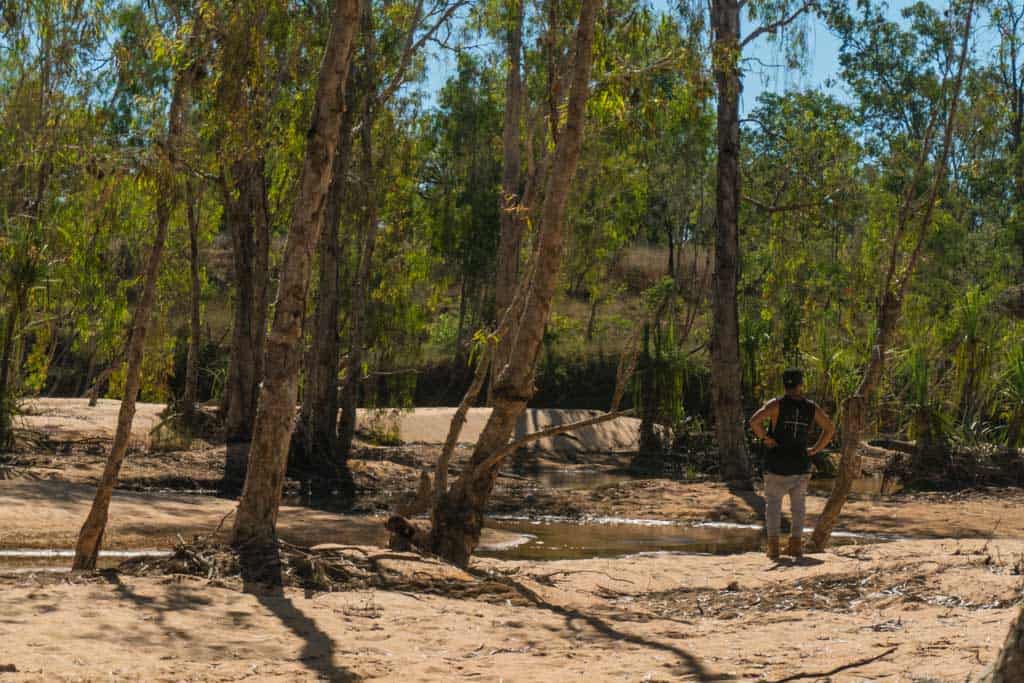
How to Find Free Camps in Australia
Preparation is key to find free campsites on your road trip. Starting with this blog post, you want to be as informed as possible since every state has its own laws and free camping will vary as you move throughout the country.
For example, you’re likely to find more designated free campsites in NSW and Victoria than in Western Australia. However, in WA, there are plenty of places where wild camping is permitted. You just have to know where to find them as there are no signs.
Apps
Given our technological age, there are plenty of apps available that are particularly useful to help you find free a camping spot. These apps also tell you where paid campsites area, what amenities you’ll find at the sites, BBQs, dump stations and more.
- WikiCamps: This app offers much more than just campgrounds – you’ll also find caravan parks, backpacker hostels, points of interest, dump stations, visitor information centres, water taps, toilets, showers, and more. The app works offline and also has a trip planner option allowing you to mark out your locations, make notes and custom map pins. The app costs $7.99 AUD and this investment is well worth it. Download it here.
- CamperMate Australia & NZ: while not as extensive as WikiCamps, this free app helps to find free campsites, free Wi-Fi, public toilets, public showers, road warning and even any deals or specials available in the area. Download the app here.
- NSW Parks app: if you’re travelling through NSW, this state-run app is awesome for locating camp areas in national parks. Download the app here.
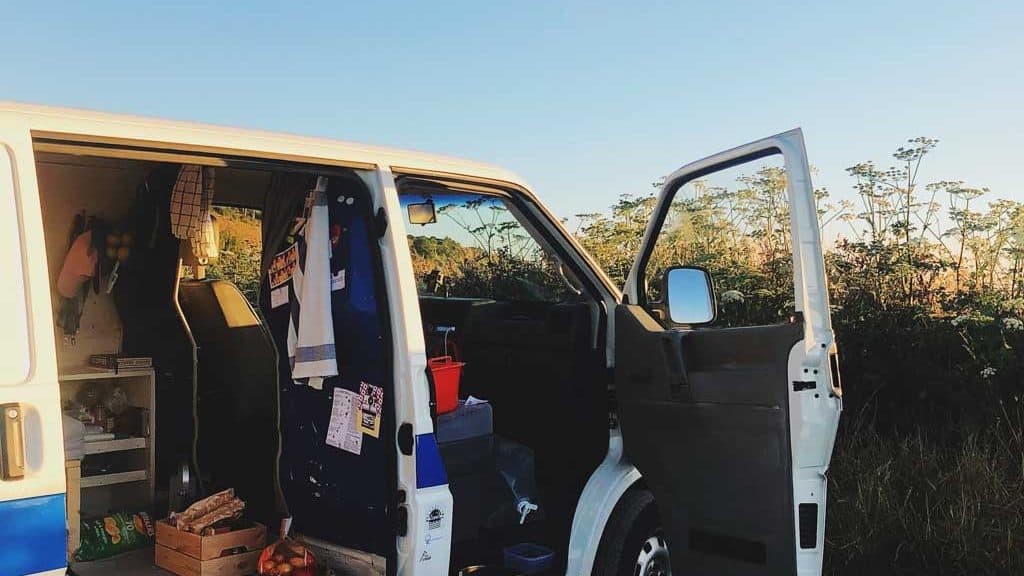
Maps
Personally, Maps.me was a game-changer for me. The map had a lot of awesome stealthy wild camping areas although you never know if it is or isn’t one until you arrive.
For example, there are plenty of free and wild campsites along the Gibb River Road in Western Australia and MAPS ME had every site marked on the map! We paid for about 3 nights of camping out of the 18 days on the road.
You can also use maps to find roads that lead towards more remote spots along a riverbank where you can possibly camp.
Blog posts on specific areas
It’s always best hearing from people who have been there and done that so hop online and read about the areas to prepare as much as possible. You’ll find awesome tips and advice to help save you time and money and then even get some secret insider secrets.
Facebook groups
There are plenty of backpacker and campervan groups in Australia that also offer insider info on campsites around Australia. There are many commonly travelled routes and thousands of backpackers who have been up and down these same roads on the lowest budget possible. You’ll get a lot of valuable info in these.
Don’t forget to follow us on social media, where we share the real story of what it’s like travelling and living in a van full-time!
Visitor Centres
If there’s a visitor centre where you are going, make sure to stop in for the best tips, advice and maps in the area. The workers in the visitor centre also have great information on free campsites, where you can wild camp without getting into trouble and facilities available in the area for you to do your business.
You should also ask about which land is sacred and protected is to avoid wild camping in areas that are sacred to Indigenous Australians.
Get creative
I realise that this is going against the exact advice I gave about being prepared and having a plan but honestly, some of the most fun is in finding hidden gems that no one else knows about.
If you have plenty of time, drive around and get creative with where you can park for the night. Use maps to spot a riverbank and driving path and travel along there until you find a beautiful place with a view for the night.
Talk to other travellers
Make friends along the way and talk to other travellers about their experiences and where they stayed. You’ll get plenty of great insight and perhaps you can exchange hidden free camps with each other. Staying at caravan parks from time to time plugs you into other campers.
Make sure you check out our brand new post on everything you need to know about living in a van! Click here to read it.
The Do’s and Don’ts of Free Camping
Free camping is a privilege, not a right so that means respecting the space and those around you. Keep noise levels down, don’t take up an unnecessary amount of space or leave your belongings scattered everywhere.
Travel and camp on durable surfaces and beware of delicate habitat. Avoid parking anywhere that will damage the ecosystem.
Don’t abuse the stay limits. If a find a designated free campsite that allows for 1 night only and you’re travelling during the peak season and there are people searching for a place to stay, don’t be the person who hogs the campsite for a week straight. Give others a chance, move on to the next one and share the love.
Don’t disturb wildlife and nature. Please avoid feeding and harassing animals, leaving food or rubbish around that they might eat and just enjoy looking at them.
Obey the total fire ban. This should go without saying but if you’re travelling during a season where fires are banned, please DO NOT light a campfire. Australia is a dry country and bushfires are a real threat and can get wildly out of control so any fire should be treated with serious caution. Be particularly careful when cooking on any naked flame (like a gas stovetop) outside if you’re in the bush.
Read and follow signs about sacred Aboriginal land, croc-infested waters and areas that say ‘no camping’. If there’s a sign, it’s for your benefit. Read it!
Leave NO trace and take everything that you brought in. All rubbish and food scraps should be removed and your campsite should look like no one was ever there.
Dispose of waste properly. Trash goes in the bin, toilet waste in dump stations, please.
Respect national park rules: You will find that many national parks (particularly those in more remote areas where there aren’t a lot of people visiting) go by an honesty system. Here, if you don’t have a national park pass, you’re expected to place money into an envelope for the entrance fee. Please honour the system (we all benefit from it) and read the rules for the national park. There’s usually a map with any camping spots marked as well.
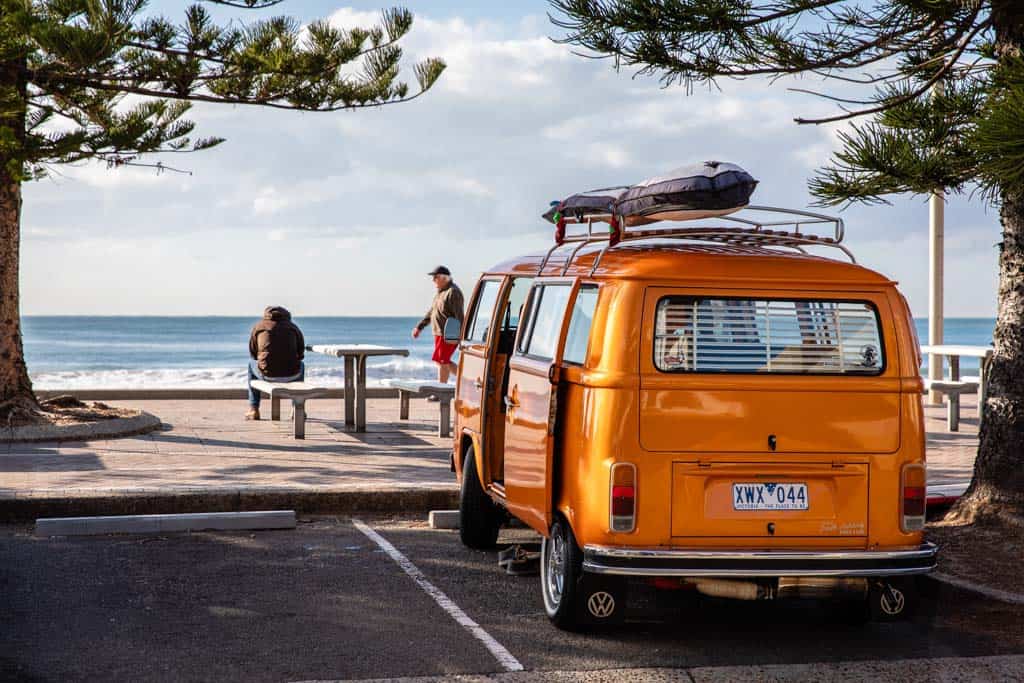
General Tips for Road Tripping and Camping Australia
1. Get offline maps or a paper map
You definitely want to prepared with offline maps (Google Maps and Maps.me together is a good combo) otherwise have a paper map.
You’ll find many stretches of road in Oz without any cell phone service. Mark any free campsite you already know about in advance on the map to make for easy navigating, particularly if you end up arriving late.
2. Have a plan
One of the best things about van life is the freedom from schedules, destinations and expectations. However, in Australia, the outback isn’t a joke and you will often find yourself without any phone service.
While you don’t need to have a full committed plan in mind, make sure to map out any free campsite around the area you think you’ll be stopping for the night.
3. Don’t underestimate the size of Australia
On a map, Australia might not look so big. In reality, and once you start driving along the long empty roads, the distances between destinations can be excruciatingly long (and scenic!).
Australia is MASSIVE. As part of your planning, always allow for way more time to get to your destination.
4. Arrive way before sunset
And while you’re allowing for ample travel time, always try to arrive before it gets dark. Driving in the outback around sunrise and sunset can usually be dangerous because of wildlife on the road (particularly kangaroos), so adding in trying to navigate and search for a wild campsite isn’t going to make it any easier.
Oftentimes you may find yourself driving 30 minutes in the middle of the bush to a campsite marked on the map only to arrive and find that there is no way you can stay there and have to make the long trek back out.
This has happened to me several times and the only thing that makes it worse is trying to navigate through this in the middle of the night!
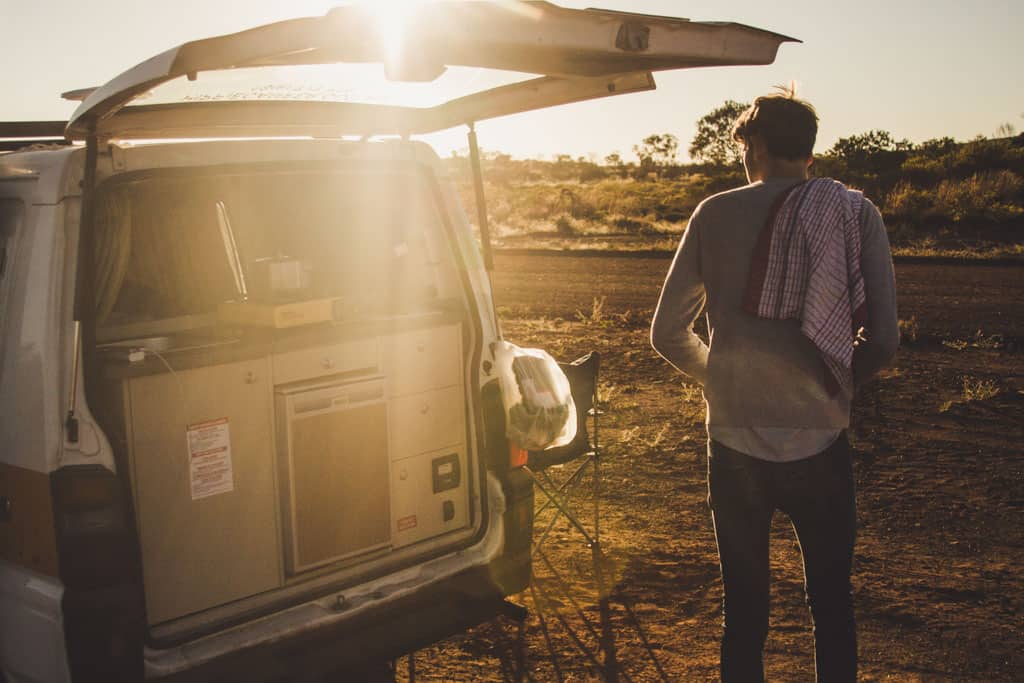
5. Be self-sufficient
Always have ample drinking water, fuel and food. Since you’re driving in the bush and in remote parts of the country, make sure you take at least one spare tyre and tools to change it (knowing how to change a tyre will also help).
Don’t expect to have reliable mobile phone coverage.
You can read more tips and essentials on this in our latest guide on car camping.
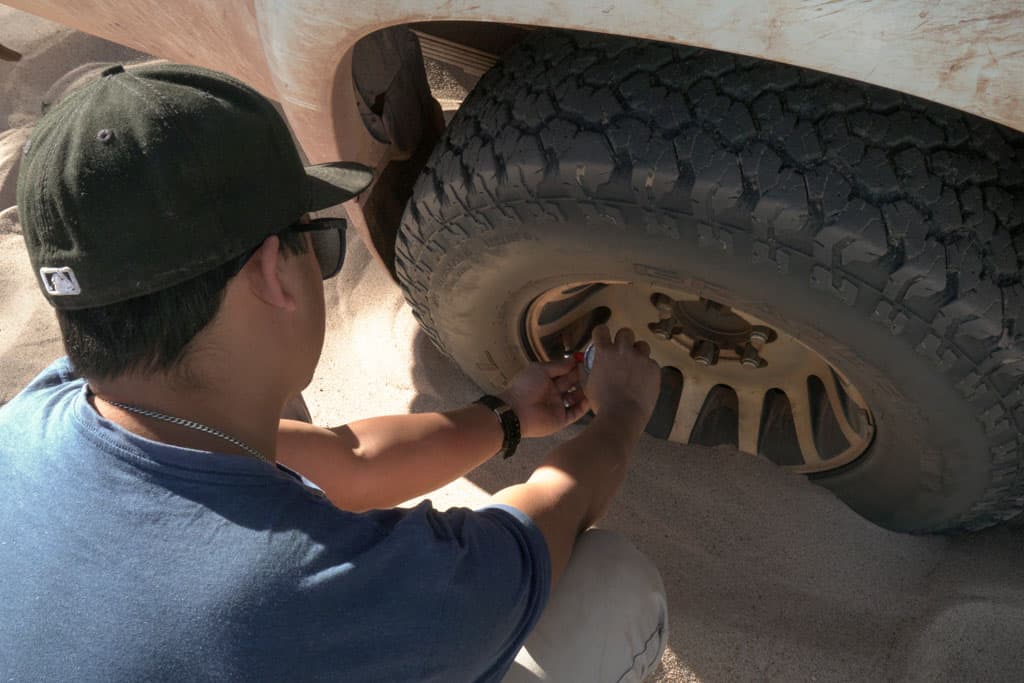
6. Be smart with water crossings
You’ll definitely run into some water crossings along the way and if you’re unsure how deep a crossing is and don’t have a lifted car or experience with these crossings, it’s best to wait for another car to cross first.
Watch how high the water comes up on the car and try to follow the same path if it’s the suitable one for your campervan.
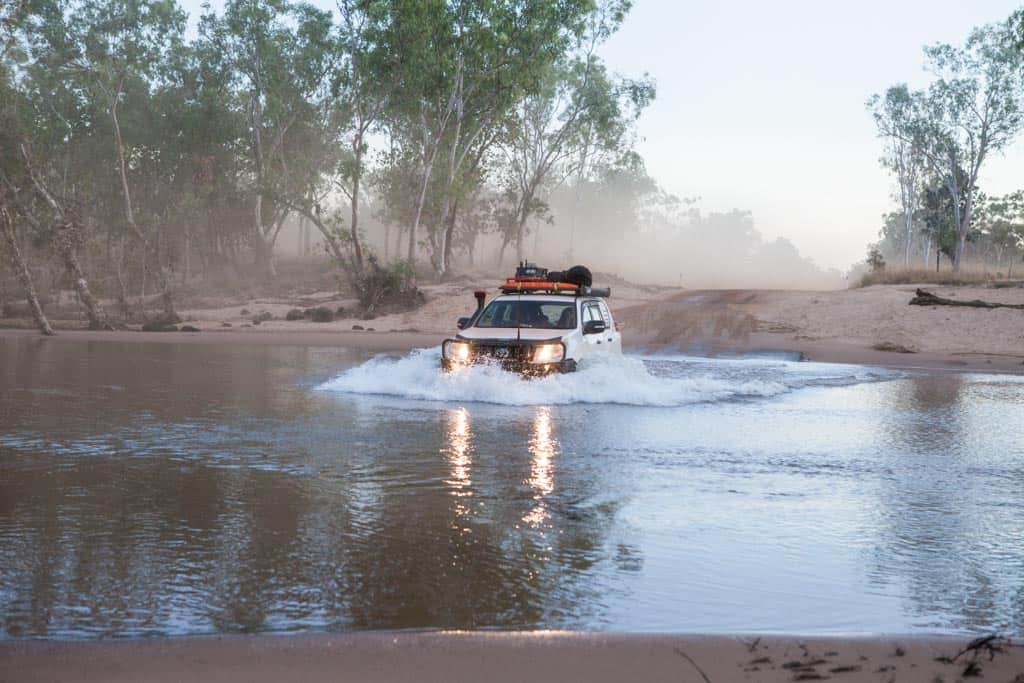
7. Use toilets in towns or petrol stations before getting to your campsite
Avoid bush poos by stopping by petrol stations or within towns before you get to your campsite for the night and do your business. Get it out of the way and save yourself the stress later.
8. But if you are going to bush poo
Sometimes you just can’t wait so take a shovel with you and dig a hole at least 30cm deep, do your business and then bury it properly. Not a glamorous subject but nobody wants to step on your log, mate!
9. Fill up fuel on Cheap Tuesdays
According to MotorMouth, Tuesdays and Wednesdays are the cheapest days to fill up fuel around Australia. Avoid filling up on weekends and public holidays!
If you are doing grocery shopping at any of the big supermarkets, you’ll also get discount fuel vouchers when you spend over $30 so keep these handy for the road.
10. Handy things to have
This list could probably go on and on but besides your staples like drinking water, food and fuel, don’t start your road trip in Australia without:
- Flashlight and/or headlamp: necessary for navigating yourself around campgrounds without light (and no free camping spots will ever light).
- Sunscreen (note the hole in the ozone layer above Australia)
- Insect repellent (the mosquitoes are bad)
- A fridge – Australia is hot and food just won’t last long on your drives. If you don’t have power in the car for a fridge, at the least use an icebox and bring non-perishables or dry foods.
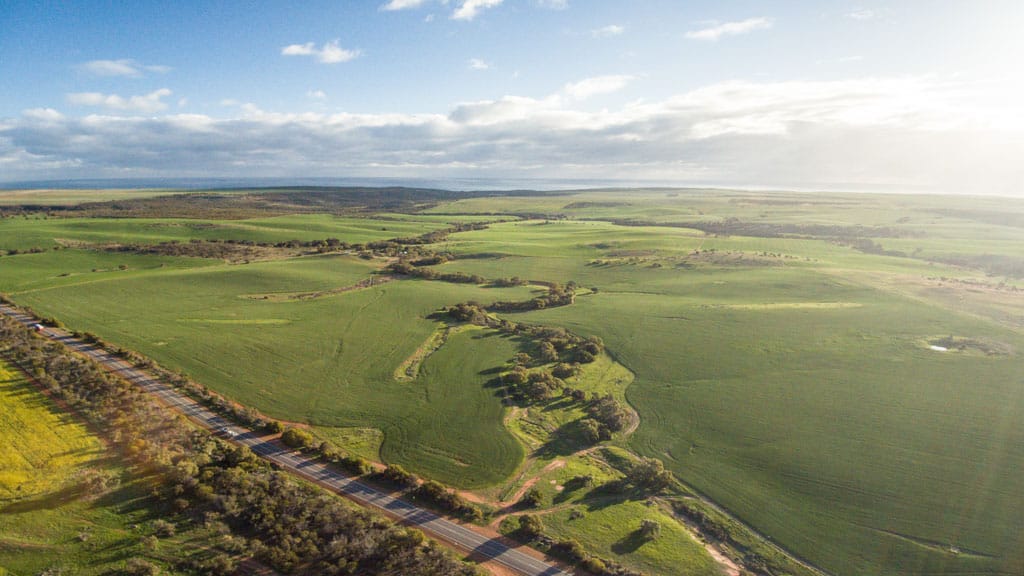
A road trip around Australia is an experience of a lifetime and free camping is the cherry on top. Let us know how you found our guide and what some of your favourite free Australian campsites are!
This post may contain affiliate links. That means if you make a purchase a product we recommend using the links in this article, we may receive a small commission at no extra cost to you. We promise to use this pocket money to buy lots of coffee and fuel for the campervan to keep us enjoying #VanLife for just a little longer. We appreciate your support, and only recommend products we know and trust. Thank you friends!
